One of the most asked questions when it comes to competitive knife throwing is: What are the best throwing knives?
There’s no easy answer because the best throwing knife is the knife that works best for you! We can help you determine what may suit you best by looking at several factors including your skill level, the purpose for which you plan to use it, and your budget. When choosing a throwing knife, there are several important factors to consider, which we will dive into below. Whether you’re looking to compete at the global level for a world championship title, or just looking to throw for fun, we’ve got you covered.
The ideal size will depend on your personal preference and the type of throwing you plan to do. For recreational use, you have many options to choose from but for competition, you’ll need to pay attention to the rules of the organization you’re throwing in. Typically no-spin knives are smaller and thrown at a closer distance but most organizations throw from about 9-10 feet away.
If you want to compete competitively in knife throwing, one of the most important things to do before you purchase is to check your organization’s guidelines. You can see here the outlined knife specifications for the World Knife Throwing League (WKTL). If you aren’t looking to compete, you can skip the below section.
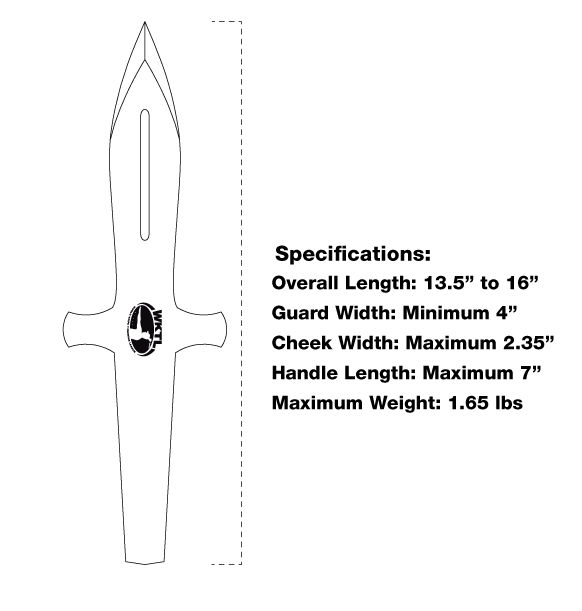
To compete in the World Knife Throwing League, you will throw from 10ft (1 rotation) and 15ft (2 rotation) distances from the target. For these distances, the length of the knife should be between 13.5 to 16 inches for proper rotation. Please keep in mind, smaller knives are more difficult to stick because it’s difficult to find the right rotation which results in wild ricochets. This is in part why all knives in the World Knife Throwing League store are within these parameters. It is suggested to start throwing at around 10ft and practicing 1 rotation there, focusing on your arm length, your reach, your release, and the placement of your hand on the handle. All of these factors will determine your rotation. We cover more about how to throw your knife in the corresponding section below. For more in-depth details on knife specifications and throwing rules for the WKTL, check out the rules page.
Though there are more distances you can throw at and those will require different rotations. Outside of official league play people can throw at 2, 3, 4, 5m, and more, which will require different grips and techniques for pepper rotation. We’ll be going into the theory of rotation later!
The design of the knife will be a personal preference but there are some things that may give you a slight advantage depending on your throw. Some knives have a curve to the blade, or a straight tip, which may help your rotation. You should always look for a handle that’s designed to provide a comfortable grip and prevent slippage.
When choosing a blade design, you want to keep in mind that you’ll want coverage, proper sticking power, and keep in mind the fact you’ll need to throw around your other knives on the target. When looking at the overall knife design, it’s important to understand the anatomy of a knife. The main areas you’ll want to consider are:
Many throwing knives do not have guards but for the World Knife Throwing League, it’s important to remember they are required.
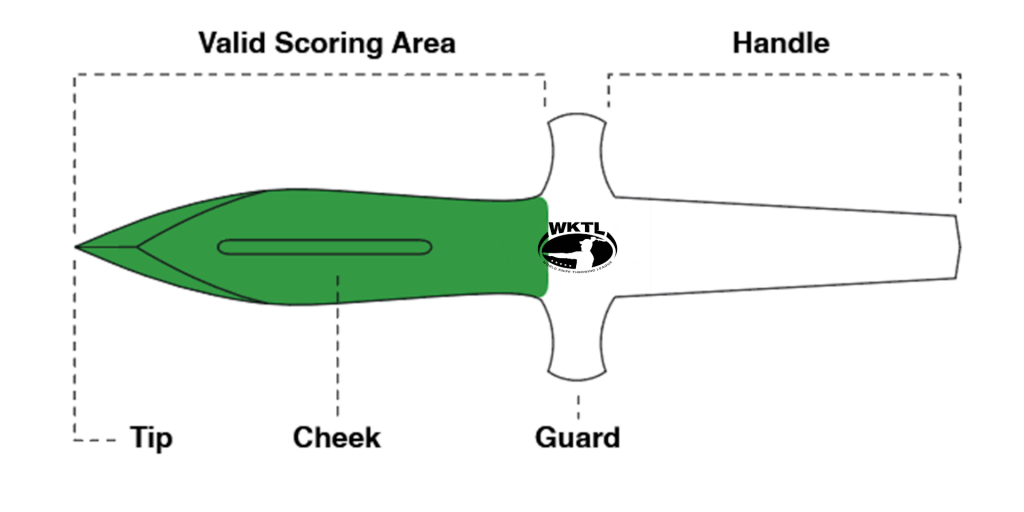
All WKTL or WKTL Certified Knives, such as Toro Knives, have different designs, weights, cheek, tip and guard designs so there are many options to choose from based on your preference in design and throwing style.
What to look for in a handle, why, do you want it taped/or not?
While there are many ways to grip a knife, the two most commonly used are the hammer grip and the pinch grip. Once you understand how to hold throwing knives, you will be able to develop better throwing techniques. The hammer grip for knife throwing provides a secure and stable hold on the knife. The hammer grip allows for greater control and stability when throwing a knife, as it provides a firm grip on both the handle and the spine of the blade. The pinch grip is another commonly used grip for knife throwing that provides a strong and precise hold on the knife. The pinch grip allows for greater precision and control when throwing a knife, as it allows you to guide the knife’s rotation with your fingers. However, it may not be as stable as the hammer grip, and may require more practice to master. You can find more in-depth information on the types of grips and how to use them in the “Grip” section below.
A common rule of thumb: small and light knives are not ideal for throwing; they are difficult to stick because they do not have the weight, they require a lot of force, it’s hard to find the right rotation and they can ricochet in unpredictable ways. Instead, you want to look for a throwing knife that has the appropriate weight and balance which is what WKTL knives offer with their size. Contrary to popular belief, the weight does not have to be evenly distributed along the length of the knife in order for it to stick on the board from a certain distance. A perfect example of this, is the Blackhawk from WKTL, arguably, the most popular knife due to its coverage.
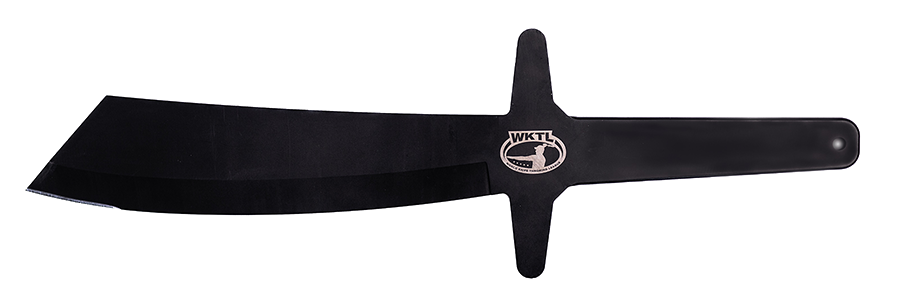
The weight distribution of the knife will alter your rotation from different distances. An experienced thrower will be able to compensate for the weight difference using any knife, but a more novice thrower will most likely need to find an evenly balanced knife before experimenting with others. Some knives have a center of gravity that is closer to the handle, which is better for beginners, while others have a center of gravity that is closer to the tip, which is better for more experienced throwers.
The weight of the knife should not be too light. Heavier throwing knives are more stable in their flight because:
More weight → more mass → more inertia → which means that you can make small mistakes without influencing the flight of your knife.
If you’re concerned with the weight or feel you may not have the strength to throw a heavier blade, we suggest starting with a lighter throwing knife to develop the skill and stamina needed, then subsequently switching to a heavier model later.
There are 3 factors that play a key role in how to throw your knife and build a consistent foundation. When combined, each of these factors will help you to not only stick your knife in the target, but become more precise and consistent with your throw.
Throwing distance has been mentioned a few times now and is a major factor in choosing what knife you’re going to use. Distance is one of the things that will heavily affect your rotation so it’s important to understand where you’ll be throwing from the most often. A quick rule of thumb is: the closer you are throwing to the target, the smaller your knife should be. The further you are from the target with a small knife will require more rotations, meaning less accuracy if the knife is too small.
Distance in WKTL Competition
For throwing in the World Knife Throwing League, you’re going to be throwing from 10ft and 15ft, so you’ll want a knife that you’ll be able to hit 1 rotation and 2 rotations respectively. That is why all WKTL knives are made to be 13.5 to 16 inches long, to allow anyone to find a knife that meets their throw distance regardless of their height or arm length.
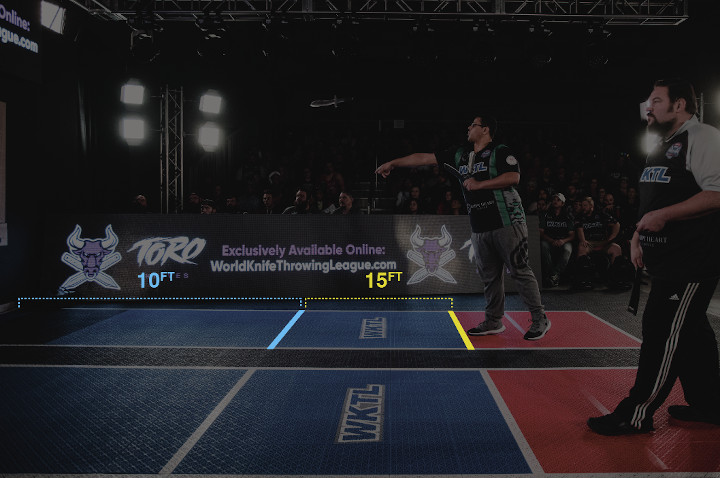
Below you’ll find some common grips used in knife throwing; try them out to find which works best for you, and try making small adjustments until you find what works best for you.
As a hybrid of the other 2 grips, the Combination grip gives you the flexibility of the Pinch grip with the firmness and control of the Hammer grip.
Adjust your grip as necessary to ensure a comfortable and secure hold on the knife. Be sure to keep track of where your grip goes and continue to keep that same handle grip location to increase the chance of consistent rotations. Consider using tape to mark where your fingers rest so that each time you grip the knife it is the exact same.
How you throw and release the knife will determine how the knife rotates in the air. Rotation in knife throwing refers to the way a knife spins through the air as it travels toward its target. When a knife is thrown, it rotates around its center of gravity (or axis), which is usually located at the midpoint of the blade and handle.

In order to achieve accurate and consistent throws, it is important to understand how to control the rotation of your knife. To build a solid foundation when throwing, follow these tips:
Square your shoulders to the target. Firmly plant your feet and keep your shoulders pointing forward towards the target. This will give you a solid stance and foundation for each throw.
Lock your wrist. Keeping your wrist tense while throwing will allow better control on your release. A limp wrist will result in an over rotation.
Keep your elbow tucked in. When lifting the knife to throw, make sure to keep your arm straight over your throwing shoulder, keeping the elbow tucked in so that the knife is raised directly beside your head. “Elbow to ear” is a good descriptive aid to ensure that your elbow stays tucked in throughout your entire throw and release.
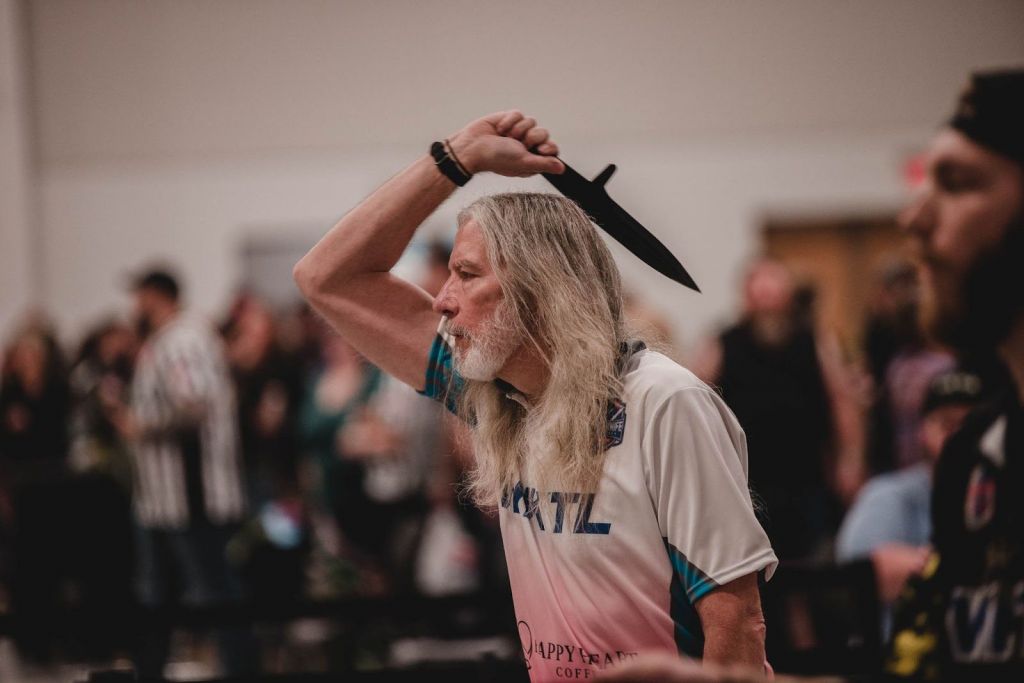

Follow through. Upon release, don’t flick your wrist or force the rotation of the knife. The momentum of your throw will automatically spin the knife around its axis without any added force applied. A good descriptive to help with follow through is to either A) point your finger at the target or B) bring your hand down to your pocket after release, finishing the motion through your entire arm.
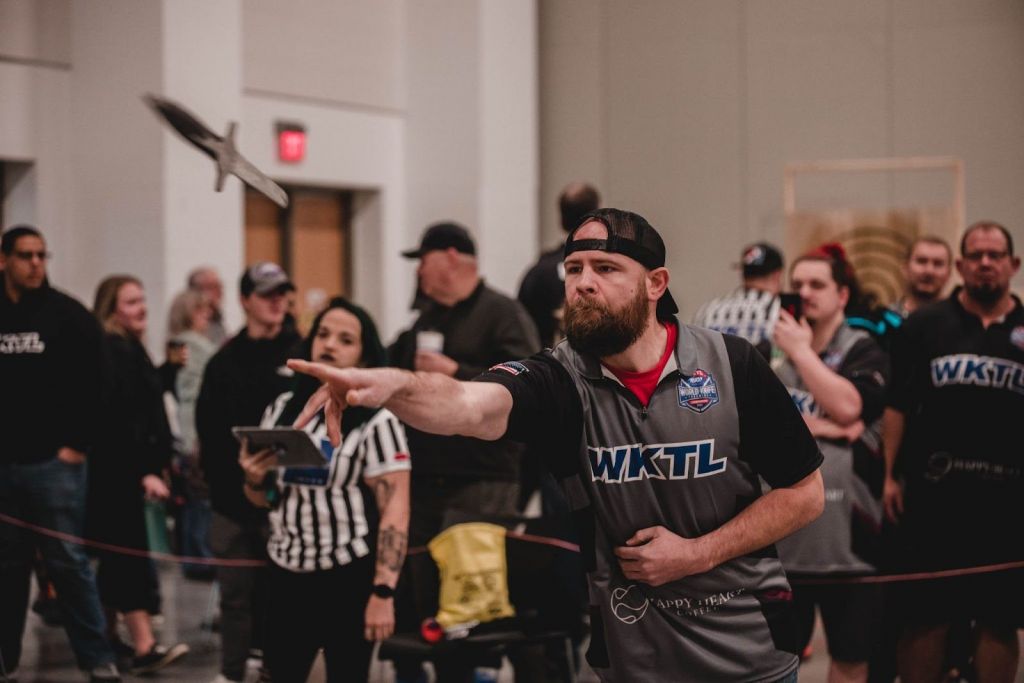
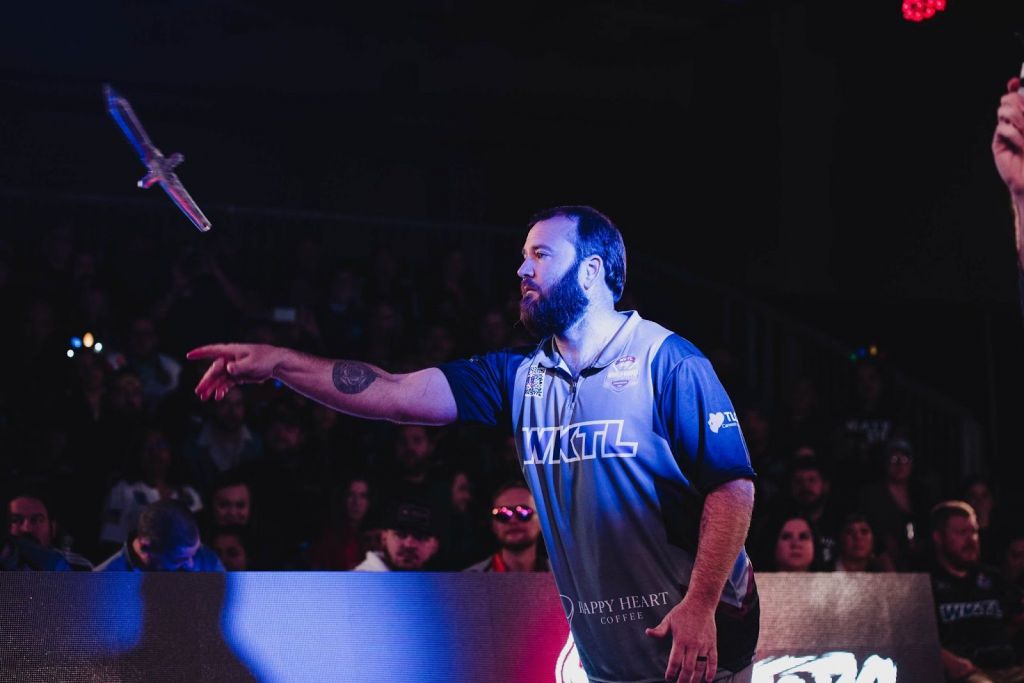
To dive deeper into how to throw a knife, and learn more about the Theory of Rotation, check out the Basics of Knife throwing.
Did you think we’d get this far without actually looking at some knives? Fear not! Below, we’ll show you some of the best throwing knives. These are great for throwers of all skill levels, from novice to professional competitors.
Below you’ll find our recommendations on specific knives for your skill level. Don’t connect with any of the recommendations listed? Check out the chart at the end to compare all WKTL throwing knives side by side to find your best fit!
It’s important to remember that the best throwing knife for you will depend on your throwing style, your skill level, as well as your personal preferences. It’s also important to invest in quality knives that are designed specifically for throwing, as regular knives may not be suitable and could be dangerous to use.
The Highlander is an excellent option for novice throwers. This knife is specifically designed for competition use and features a durable steel frame and wide profile that makes it easy to stick in the target with good coverage. Named after the people and warriors that hail from the Scottish Highlands, the Highlander is one of the longest knives in the WKTL roster. It has a distinct wide blade as well and a smoother design than many others.

For those who want a durable and affordable knife for casual use, the Muerto from Toro Knives is an excellent option. This knife has a solid steel frame that is built to last and a wide head that is designed to withstand repeated use. Additionally, the Muerto is very affordable, making it a great option for those who want a reliable knife without breaking the bank while they learn to throw.

The Barbarian is an excellent choice for a venue’s house throwing knife as it is designed specifically for durability. This means it is designed to withstand whatever abuse inexperienced throwers can put it through. The Barbarian is named after all the warriors from many cultures around the world that were strong and fierce but considered ‘uncivilized’ or ‘primitive’ by some in their time. This knife is in a similar diamond design to the Sparrowhawk, of the Birds of Prey line, but distinctly different in its make with more crisp angles and a slightly heavier blade.
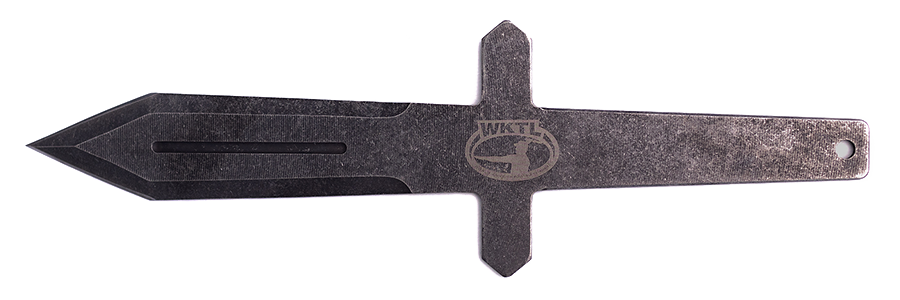
Named after the common Black Hawk (Buteogallus anthracinus) this knife is broad like its namesake’s wingspan. Fashioned in a modified clip point blade style, this massive knife is the longest in the roster of WKTL knives and just under the weight limit for WKTL league specifications by .05lbs. The heaviest knife in the WKTL lineup, it’s a fan favorite due to the target coverage the knife’s tip provides.

The Merlin is named after the falcon of the same name (Falco columbarius). Just like this well-regarded bird, the Merlin is easy to control due to its weight distribution, making it one of the most balanced knives in the lineup. The tip is fashioned with a needlepoint style for optimal wood penetration and extreme accuracy with proper rotation.
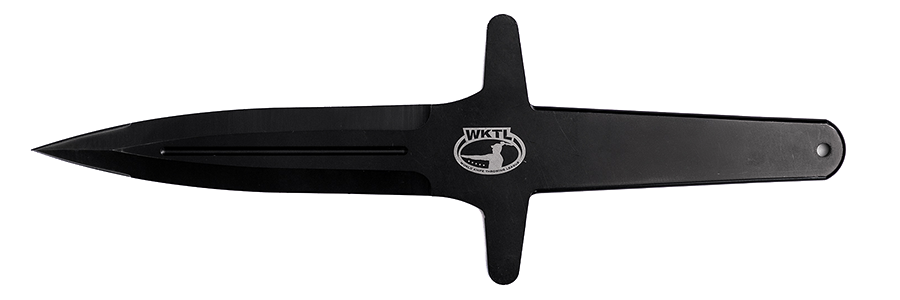
The Phoenix is named not after a traditional bird of prey, but after the fiery bird found in many cultures’ mythologies. This knife is very similar to the Merlin but with a slightly longer profile and a bit more weight. As professional knife throwers know, even a slight difference makes for a different throw. This blade has a slight outcurve for a better surface area coverage on the boards.

No matter what knife you choose, it’s important to remember that the best throwing knife for you will depend on your throwing style, your skill level, as well as your personal preferences. It’s also important to invest in quality knives that are designed specifically for throwing, as regular knives may not be suitable and could be dangerous to use.
To better understand which knife may be best for you please refer to this chart which will let you rank the knives by the measurements that are important to you:
| Name | Manufacturer | Weight (lbs) | Thickness (in) | Overall Length (in) | Blade Length (in) | Blade Width (in) | Guard Width (in) |
|---|---|---|---|---|---|---|---|
| Blackhawk | WKTL | 1.6 | 0.19 | 16 | 9.25 | 2.2 | 4.7 |
| Griffin | WKTL | 1.29 | 0.19 | 14.125 | 6.75 | 1.9 | 4.67 |
| Harpy | WKTL | 1.16 | 0.22 | 14.5 | 8.26 | 1.57 | 4.67 |
| Merlin | WKTL | 1.2 | 0.21 | 14.25 | 7 | 1.5 | 4.7 |
| Phoenix | WKTL | 1.3 | 0.19 | 14.25 | 7.5 | 1.8 | 4.69 |
| Raptor | WKTL | 1.12 | 0.19 | 14.2 | 7.65 | 1.49 | 4.65 |
| Sparrowhawk | WKTL | 1.26 | 0.22 | 14.3 | 8 | 1.85 | 4.64 |
| Tobi | WKTL | 1.12 | 0.2 | 14.5 | 8.07 | 1.53 | 4.33 |
| Barbarian | WKTL | 1.2 | 0.235 | 14.6 | 8.5 | 1.83 | 4.35 |
| Crusader | WKTL | 1.3 | 0.235 | 14.5 | 8.3 | 1.87 | 4.35 |
| Highlander | WKTL | 1.33 | 0.21 | 14.625 | 4 | 2.1 | 4.36 |
| Lancelot | WKTL | 1.1 | 0.235 | 15 | 8.75 | 1.55 | 4.35 |
| Clover | WKTL | 1.3 | 0.235 | 14.5 | 8.1 | 1.84 | 4.3 |
| Stinger | WKTL | 0.82 | 0.157 | 14.5 | 6 | 1.5 | 4.36 |
| Stinger+ | WKTL | 1.07 | 0.235 | 14.5 | 6 | 1.5 | 4.36 |
| Apex Predator | Woodson Knife Co. | 1.2 | 0.25 | 14.75 | 7.5 | 1.75 | 4.13 |
| Saguro | Toro Knives | 0.88 | 0.235 | 13.3755 | 7.25 | 1.375 | 4 |
| Bandito | Toro Knives | 1.01 | 0.235 | 13.5 | 7.25 | 1.625 | 4.13 |
| Barbaro | Toro Knives | 1.07 | 0.235 | 15.625 | 9.25 | 1.625 | 4.25 |
| Maximo | Toro Knives | 1.49 | 0.235 | 15.75 | 9.25 | 2.5 | 4.5 |
| Tesoro | Toro Knives | 1.35 | 0.235 | 15.25 | 8.125 | 2.375 | 4.25 |
| Muerto | Toro Knives | 1.21 | 0.235 | 13.5 | 5.75 | 2.125 | 4.25 |
| Diablo | Toro Knives | 1.25 | 0.236 | 15.75 | 8.5 | 1.25 | 4.38 |
| Grito | Toro Knives | 1.10 | 0.236 | 14.25 | 8.5 | 1.25 | 4.25 |
| Khepri | Toro Knives | 0.97 | 0.197 | 14.39 | 8.75 | 1.5 | 4.8 |
| Pharoah | Toro Knives | 1.29 | 0.197 | 14.1 | 6.625 | 2.07 | 4.965 |
| Sobek | Toro Knives | 1.06 | 0.197 | 13.72 | 7.25 | 2.49 | 5.08 |
| Wadjet | Toro Knives | 1.31 | 0.197 | 14.18 | 6.125 | 1.5 | 5.29 |
| Anubis | Toro Knives | 1.1 | 0.197 | 14.18 | 8.5 | 1.66 | 5.33 |
| Ra | Toro Knives | 1.08 | 0.197 | 14.15 | 8.4 | 1.65 | 5.49 |
| Kiss of Death | WKTL | 0.92 | 0.197 | 14.2 | 7.13 | 1.96 | 4 |
| Undisputed | WKTL | 1.12 | 0.236 | 13.75 | 8.6 | 1.9 | 5 |
| Lobo | Toro Knives | 1.43 | 0.236 | 13.5 | 4.8 | 2.44 | 4.33 |
| Megaldon | WKTL | 1.5 | 0.236 | 15.49 | 8.4 | 2.45 | 4 |
| Thunderbolt | WKTL | 1.34 | 0.236 | 14 | 7.92 | 2.44 | 4 |
| Crusader Pro | WKTL | 1.56 | 0.236 | 14.6 | 7.87 | 2.4 | 4.14 |
If you’d like to get your own, don’t forget to check out our store where you can browse all the best-throwing knives for competition and recreation!